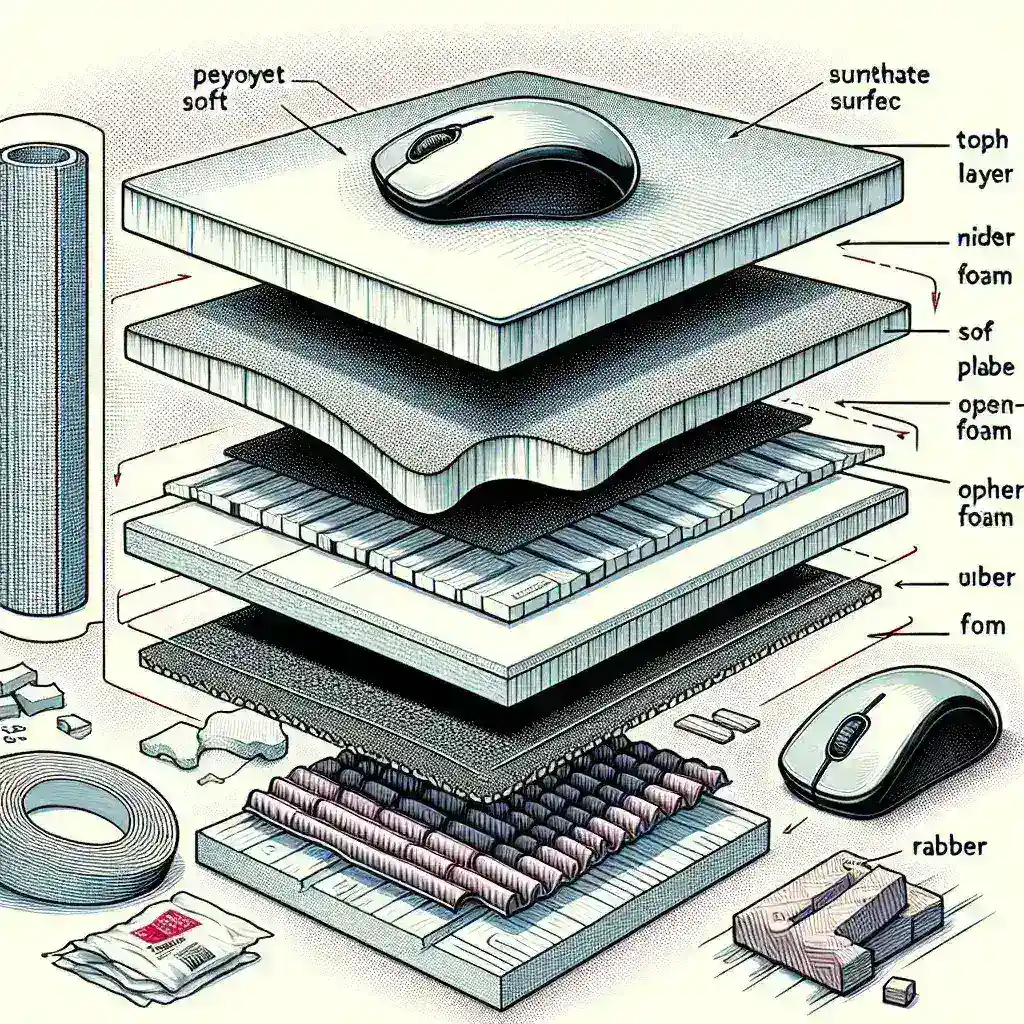Introduction
Mouse pads are essential accessories for computer users, providing a smooth surface for optimal mouse tracking and comfort during long hours of use. However, not all mouse pads are created equal; they come in different materials that can significantly affect performance and user experience. In this article, we delve into the various materials that mouse pads are made from, their characteristics, advantages, and how they impact performance.
Overview of Mouse Pad Materials
| Material | Description | Advantages |
|---|---|---|
| Cloth | Soft textile surface with foam or rubber backing. | Comfortable, quiet, and suitable for low DPI settings. |
| Plastic | Hard, rigid surface that is often smooth or textured. | Durable, easy to clean, and suitable for high-speed movements. |
| Rubber | Flexible, often used as the base material for grip. | Provides stability and prevents slipping on desks. |
| Aluminum | Metal surface with a finish that can be anodized or coated. | Very durable, provides precision tracking, and easy to clean. |
| Glass | High-quality glass surface that is smooth and elegant. | Stylish appearance, durable, and provides excellent tracking. |
| Hybrid | Combination of various materials, such as cloth and plastic. | Balance of speed and control, versatile for different usage. |
Types of Mouse Pad Materials
1. Cloth Mouse Pads
Cloth mouse pads are one of the most common types available. They typically feature a soft textile surface with a rubber foam backing. This material is designed for comfort and provides a quiet operation, making it suitable for gamers and professionals who use low DPI settings.
2. Plastic Mouse Pads
Plastic mouse pads offer a very different experience. They are often made of hard plastic, providing a smooth and firm surface that is perfect for high-speed movements. This material is also easy to clean and maintain, making it a favorite among professionals who need a reliable surface.
3. Rubber Mouse Pads
While rubber is not typically the main surface of a mouse pad, it is crucial for the base layer. Rubber mouse pads provide excellent stability, preventing them from slipping or sliding during use. This material helps ensure that the mouse pad stays in place, regardless of the user’s movements.
4. Aluminum Mouse Pads
Aluminum mouse pads are a premium option. They offer a sleek look and exceptional durability. Many aluminum mouse pads come with an anodized finish, which can enhance their aesthetic appeal while providing precision tracking for users. They are also easy to clean and are resistant to wear and tear, making them a long-lasting choice.
5. Glass Mouse Pads
Glass mouse pads are another high-end option, providing a smooth surface that complements their sleek design. They are durable and offer excellent tracking capabilities, making them suitable for gamers and professional users alike. However, they may not be as comfortable to use for extended periods compared to cloth or rubber options.
6. Hybrid Mouse Pads
Hybrid mouse pads combine different materials, such as a cloth surface with a plastic or rubber basis. This combination provides a balance between speed and control, allowing users to experience the best of both worlds. These pads are versatile and can accommodate various user preferences.
Factors to Consider When Choosing a Mouse Pad Material
1. Comfort
Comfort is essential, especially for gamers or professionals who spend long hours at their computers. Cloth mouse pads generally offer more comfort compared to harder surfaces.
2. Durability
Durability is another crucial factor. Plastic and aluminum options tend to be more durable than cloth mouse pads. Depending on the intensity of your usage, it’s essential to choose a material that can withstand daily wear and tear.
3. Tracking Performance
The material of the mouse pad can influence how the mouse performs. For high-DPI settings, a smooth surface like plastic or glass can provide faster movements, while cloth pads offer more control at lower DPI settings.
4. Surface Texture
Different surfaces provide varying levels of friction, which can affect performance. Consider whether you prefer a more textured surface for control or a smooth one for speed.
5. Maintenance
Ease of cleaning is a significant consideration. Plastic and aluminum pads are generally easier to clean compared to cloth mouse pads, which may require more care to maintain their appearance.
Conclusion
Mouse pads come in a variety of materials, each offering its unique advantages and disadvantages. When choosing a mouse pad, consider your personal preferences, the type of tasks you perform, and how the mouse pad’s material can enhance your overall computer experience. Whether you prioritize comfort, durability, or tracking performance, understanding the materials used can guide you to the best choice for your needs.

